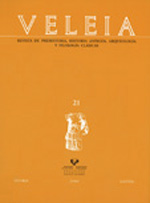Similitudes y diferencias en el proceso de evolución tipológica del Musteriense al auriñaciense en la cueva de Gatzarria (País Vasco)
##plugins.themes.bootstrap3.article.main##
##plugins.themes.bootstrap3.article.sidebar##
Abstract
Regarding the debate on the position of Castelperronian during the transformation process from Middle to Upper Palaeolithic, the Cjn 3 level of Gatzarria, despite to the extended opinion making this industrial complex a terminal episode of Middle Palaeolithic, establishes the basic typological collection of the Aurignacian phyletic sequence of this important Pyrenean site. In fact, the different statistical analysis applied to the various typological structures of the whole stratigraphic series and, more specifically, of the technocomplexes most involved in this process of change, continuously manifest the direct link of the Castelperronian series and the ancient Protoaurignacian of Cjn 2 and, through it, with the general development of Aurignacoide leptholitic phyletic process, as well as its evident discontinuity with the Mousterian repertoire of Cj. Therefore, in the case of Gatzarria, it would seem more convenient to talk about break rather than transition in the process of typological evolution between Mousteroid and Aurignacoid industrial complexes.
Downloads
##plugins.themes.bootstrap3.article.details##
Unless otherwise noted, the contents of the electronic edition of the OJS platform are licensed for use and distribution under a Creative Commons Attribution-NonCommercial-NoDerivatives 4.0 International (CC-BY-NC-ND) license.
The journal does not charge any financial compensation to authors for publishing in it and provides full access to the archives without any kind of embargo from the day of electronic publication. This respects the national open access policy.
All originals published in the journal Veleia, whether in print or digital format, are the property of the University of the Basque Country (UPV/EHU). © UPV/EHU
Authors of articles (whether research articles, news articles, news items or reviews) will be able to access their own work on the Journal's website. Authors will be able to put them in their personal repositories and will also have the possibility of pre-print dissemination of articles accepted for publication.

